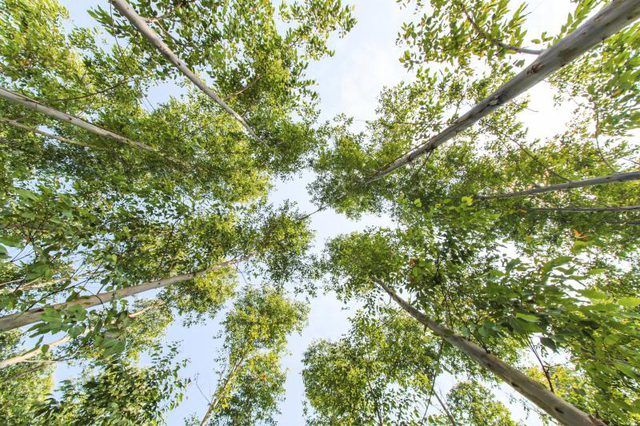Bulbs
Flower Basics
Flower Beds & Specialty Gardens
Flower Garden
Garden Furniture
Garden Gnomes
Garden Seeds
Garden Sheds
Garden Statues
Garden Tools & Supplies
Gardening Basics
Green & Organic
Groundcovers & Vines
Growing Annuals
Growing Basil
Growing Beans
Growing Berries
Growing Blueberries
Growing Cactus
Growing Corn
Growing Cotton
Growing Edibles
Growing Flowers
Growing Garlic
Growing Grapes
Growing Grass
Growing Herbs
Growing Jasmine
Growing Mint
Growing Mushrooms
Orchids
Growing Peanuts
Growing Perennials
Growing Plants
Growing Rosemary
Growing Roses
Growing Strawberries
Growing Sunflowers
Growing Thyme
Growing Tomatoes
Growing Tulips
Growing Vegetables
Herb Basics
Herb Garden
Indoor Growing
Landscaping Basics
Landscaping Patios
Landscaping Plants
Landscaping Shrubs
Landscaping Trees
Landscaping Walks & Pathways
Lawn Basics
Lawn Maintenance
Lawn Mowers
Lawn Ornaments
Lawn Planting
Lawn Tools
Outdoor Growing
Overall Landscape Planning
Pests, Weeds & Problems
Plant Basics
Rock Garden
Rose Garden
Shrubs
Soil
Specialty Gardens
Trees
Vegetable Garden
Yard Maintenance
How to Grow Eucalyptus
How to Grow Eucalyptus. Known for their invigorating scent, peeling bark, gummy sap and ability to withstand drought, most eucalyptus trees (Eucalyptus spp.) originated in Australia, New Guinea or Indonesia. Young, rounded, blue-gray leaves, often used as filler by florists, eventually give way to lance-shaped green leaves on mature trees. Popping...

Known for their invigorating scent, peeling bark, gummy sap and ability to withstand drought, most eucalyptus trees (Eucalyptus spp.) originated in Australia, New Guinea or Indonesia. Young, rounded, blue-gray leaves, often used as filler by florists, eventually give way to lance-shaped green leaves on mature trees. Popping out of concealing caps, white, yellow, pink or red eucalyptus flowers are composed mostly of frilly stamens. The hardiness of eucalyptus trees varies, according to species, from U.S. Department of Agriculture plant hardiness zones 7 to 12. Although occasionally raised as houseplants too, most eucalyptuses quickly outgrow their containers.
Pick a Petite Plant
Many eucalyptus trees are just too large and fast-growing for use in garden landscapes -- especially mountain ash (Eucalyptus regnans), considered the tallest hardwood in the world at over 320 feet. Fortunately, the shorter and multi-stemmed, shrub-type eucalyptuses such as mottlecah (Eucalyptus macrocarpa), hardy in USDA zones 9 through 11 and four-winged mallee (Eucalyptus tetraptera), hardy in USDA zones 10 through 11 seldom surpass 12 feet and produce some of the showiest flowers of the genus. Mottlecah’s red or pink blooms can reach up to 4 inches in diameter, while four-winged mallee’s more dangly flowers resemble red bells with pink stamens.
Select the Safest Site
Because they shoot up rapidly and don’t like root disturbance, eucalyptus trees need to go into the ground while they are still quite young -- from 18 inches to 3 feet tall -- before they become root-bound in their containers. They prefer well-drained, sandy loam of average fertility in full sun, where they will be protected from heavy winds. If you wish to create a screen of eucalyptus trees, they should be spaced 6 to 8 feet apart; otherwise, position them at least 10 to 15 feet distant from each other or from other plantings. As the trees are highly flammable, it’s best to keep them away from buildings in areas prone to wildfires.
Tend Your Tender Tree
Keep your eucalyptus tree’s soil lightly damp for the first week after planting, and water it deeply about once a week thereafter if the weather is dry. Mulch the tree heavily, as its shallow roots don’t compete well with weeds. Encircle it with up to 6 inches of shredded bark, spread at least 2 feet out from its base, but kept a few inches back from the trunk itself. A eucalyptus tree shouldn’t receive high-nitrogen fertilizers, which can cause it to grow too fast for its roots to support its height, and stimulate overabundant tender new shoots that attract insect pests and make the tree more vulnerable to frost. Instead, feed the sapling once a year with bone meal, which will help it develop strong roots. Apply 1 cup for each 1 inch of the trunk’s diameter, scattering it inside the tree’s drip line.
Protect a Potted Plant
When a houseplant eucalyptus becomes large enough for a 5-inch pot, choose a heavy clay one and a cactus potting soil which includes a substantial amount of sand, as the fast-growing tree will require weight at its base to keep it from toppling. Best kept in a sunny, protected spot outdoors during the months when temperatures remain above 32 degrees Fahrenheit, eucalyptus also needs an airy position where it receives full sun and cool conditions -- preferably between 45 and 60 degrees F. -- during the rest of the year. Keep its soil lightly damp during summer, but allow it to dry out a couple inches below the surface during winter before you water the plant again. Never permit the soil to dry out completely, however, as a eucalyptus tree is difficult to revive after its foliage wilts. Feed the plant once a week during spring and summer, using 1 tablespoon per gallon of water of an organic, liquid, low-nitrogen plant food such as 0-10-10.